Filter by

Evaluation and credentialing in digital music communities :benefits and chall…
An examination of the use of digital badges as a reward for both casual online music evaluators and professional musicians.Professional and amateur musicians alike use social media as a platform for showcasing and promoting their music. Social media evaluation practices—rating, ranking, voting, “liking,” and “friending” by ordinary users, peers, and critics—have become essential pro…
- Edition
- -
- ISBN/ISSN
- 9780262527149
- Collation
- vii, 102p. : ill.
- Series Title
- -
- Call Number
- 780.2854678 SUH e

Visions for Intercultural Music Teacher Education
This open access book highlights the importance of visions of alternative futures in music teacher education in a time of increasing societal complexity due to increased diversity. There are policies at every level to counter prejudice, increase opportunities, reduce inequalities, stimulate change in educational systems, and prevent and counter polarization. Foregrounding the intimate connectio…
- Edition
- -
- ISBN/ISSN
- 9783030210298
- Collation
- x, 220p., ill.
- Series Title
- -
- Call Number
- 780.71 wes v

Sport Policy in Canada
The first and most comprehensive analysis of the new Canadian Sport Policy adopted in 2012.
- Edition
- -
- ISBN/ISSN
- 9780776621265
- Collation
- xiii,434 p
- Series Title
- -
- Call Number
- 796.069 ULT S

Post-digital, post-internet art and education :the future is all-over
This open access edited volume provides theoretical, practical, and historical perspectives on art and education in a post-digital, post-internet era. Recently, these terms have been attached to artworks, artists, exhibitions, and educational practices that deal with the relationships between online and offline, digital and physical, and material and immaterial. By taking the current socio-tech…
- Edition
- -
- ISBN/ISSN
- 9783030737702
- Collation
- 300 p
- Series Title
- -
- Call Number
- 707 KEV p

The Conflict of the Faculties:Perspectives on Artistic Research and Academia
Artistic research is an endeavour in which the artistic and the academic are connected. In this emerging field of research artistic practices contribute as research to what we know and understand, and academia opens its mind to forms of knowledge and understanding that are entwined with artistic practices. Henk Borgdorff also addresses how we comment on such issues, and how the things we say ca…
- Edition
- -
- ISBN/ISSN
- 9789087281670
- Collation
- x, 277 p
- Series Title
- -
- Call Number
- 707
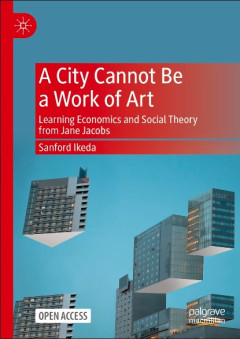
A city cannot be a work of art learning economics and social theory from jane…
This open access book connects Jane Jacobs's celebrated urban analysis to her ideas on economics and social theory. While Jacobs is a legend in the field of urbanism and famous for challenging and profoundly influencing urban planning and design, her theoretical contributions – although central to her criticisms of and proposals for public policy – are frequently overlooked even by her most…
- Edition
- -
- ISBN/ISSN
- 9789819953622
- Collation
- XXV, 400 p
- Series Title
- -
- Call Number
- 720.94
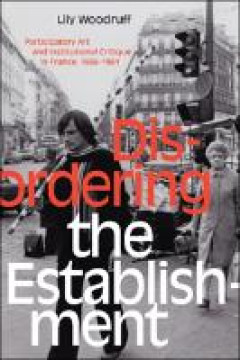
Disordering the establishment :participatory art and institutional critique i…
In the decades following World War II, France experienced both a period of affluence and a wave of political, artistic, and philosophical discontent that culminated in the countrywide protests of 1968. In Disordering the Establishment Lily Woodruff examines the development of artistic strategies of political resistance in France in this era. Drawing on interviews with artists, curators, and cul…
- Edition
- -
- ISBN/ISSN
- 9781478012085
- Collation
- xi, 336p.; ill.
- Series Title
- -
- Call Number
- 709.05015 DIS w

Disordering the establishment :participatory art and institutional critique i…
In the decades following World War II, France experienced both a period of affluence and a wave of political, artistic, and philosophical discontent that culminated in the countrywide protests of 1968. In Disordering the Establishment Lily Woodruff examines the development of artistic strategies of political resistance in France in this era. Drawing on interviews with artists, curators, and cul…
- Edition
- -
- ISBN/ISSN
- 9781478012085
- Collation
- xi, 336p.; ill.
- Series Title
- -
- Call Number
- 709.05015 DIS w
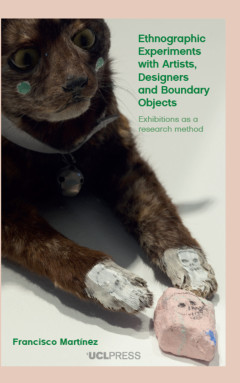
Ethnographic experiments with artists, designers and boundary objects :exhibi…
Ethnographic Experiments with Artists, Designers and Boundary Objects is a lively investigation into anthropological practice. Richly illustrated, it invites the reader to reflect on the skills of collaboration and experimentation in fieldwork and in gallery curation, thereby expanding our modes of knowledge production. At the heart of this study are the possibilities for transdisciplinary coll…
- Edition
- -
- ISBN/ISSN
- 9781800081086
- Collation
- xiii, 201 p. ill;
- Series Title
- -
- Call Number
- 708 ETH F
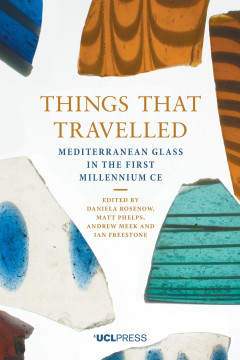
Things that travelled :Mediterranean glass in the first millennium CE
Recent research has demonstrated that, in the Roman, Late Antique, Early Islamic and Medieval worlds, glass was traded over long distances, from the Eastern Mediterranean, mainly Egypt and Israel, to Northern Africa, the Western Mediterranean and Northern Europe. Things that Travelled, a collaboration between the UCL Early Glass Technology Research Network, the Association for the History of Gl…
- Edition
- -
- ISBN/ISSN
- 9781787351172
- Collation
- xviii, 362 p. ill;
- Series Title
- -
- Call Number
- 748.20937 THI D
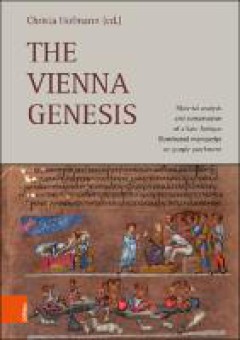
The vienna genesis :material analysis and conservation of a Late antique illu…
The Vienna Genesis (Austrian National Library, Codex Theologicus graecus 31) is a fragmentary Greek manuscript of the Book of Genesis written on purple dyed parchment with silver ink. It is assumed that the book was created in the first half of the 6th century in the Near East. 24 folios with 48 miniatures have survived and have been stored at the Austrian National Library since 1664. The Vienn…
- Edition
- -
- ISBN/ISSN
- 9783205210580
- Collation
- -
- Series Title
- -
- Call Number
- 745.67487. THE c
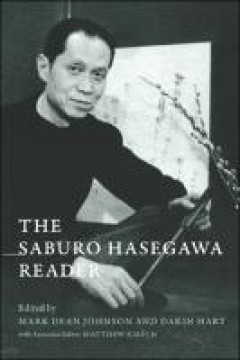
The saburo hasegawa reader
Published on the occasion of the 2019 exhibition “Changing and Unchanging Things: Noguchi and Hasegawa in Postwar Japan,” The Saburo Hasegawa Reader encompasses a selection of writings by the Japanese artist, theorist, essayist, teacher, and curator Saburo Hasegawa (1908–1957), translated into English for the first time. Credited with introducing abstract art to Japan in the 1930s, Hasega…
- Edition
- -
- ISBN/ISSN
- 9780520970922
- Collation
- xxv. :ill. ;166 p.
- Series Title
- -
- Call Number
- 709.2. THE j
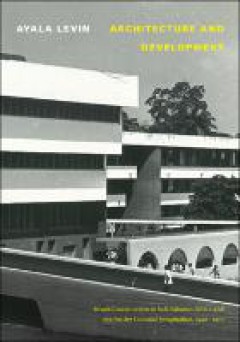
Architecture and development :Israeli construction in Sub-Saharan Africa and …
comPosing these notes during the coviD- 19 pandemic deepens my appreciation of the intellectual community that sustains prolonged efforts such as writing a book—and renders them worthwhile. From its beginning as a seminar paper, Architecture and Development has owed its formation at every step to an always converging and diverging circle of friends and family, mentors and colle…
- Edition
- -
- ISBN/ISSN
- 9781478091820
- Collation
- ix, 337p.; ill.
- Series Title
- -
- Call Number
- 720.95694 ARC l
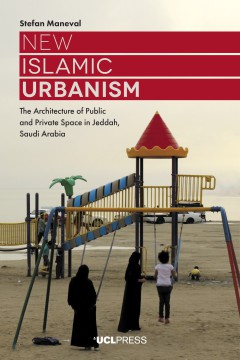
New Islamic urbanism :the architecture of public and private space in Jeddah,…
Since the dawn of the oil era, cities in Saudi Arabia have witnessed rapid growth and profound societal changes. As a response to foreign architectural solutions and the increasing popularity of Western lifestyles, a distinct style of architecture and urban planning has emerged. Characterised by an emphasis on privacy, expressed through high enclosures, gates, blinds, and tinted windows, ‘New…
- Edition
- -
- ISBN/ISSN
- 9781787356429
- Collation
- xvii, 239 p. ill;
- Series Title
- -
- Call Number
- 720.9538 NEW S

Kathleen collins :the black essai film
A philosopher-filmmaker, Kathleen Collins decisively redefined the parameters of African American film with Losing Ground (1982). This book uses detailed analyses of Collins’s films to contextualise her work in the African American, feminist and world film traditions, and it highlights her contribution to each of these canons.
- Edition
- -
- ISBN/ISSN
- 9781474440707
- Collation
- vii. ;ill. ;164 p.
- Series Title
- -
- Call Number
- 791.430233092. KAT g

The covert life of hospital architecture
The Covert Life of Hospital Architecture addresses hospital architecture as a set of interlocked, overlapping spatial and social conditions. It identifies ways that planned-for and latent functions of hospital spaces work jointly to produce desired outcomes such as greater patient safety, increased scope for care provider communication and more intelligible corridors. By advancing space synt…
- Edition
- -
- ISBN/ISSN
- 9781800080881
- Collation
- xxi, 187 p. ill;
- Series Title
- -
- Call Number
- 725.51 COV J

The Florida room
Alexandra T. Vazquez listens to the music and history of Miami to explore the city’s sonic cultures and its material and social realities.
- Edition
- -
- ISBN/ISSN
- 9781478092704
- Collation
- xiii, 259p.; ill.
- Series Title
- -
- Call Number
- 780.9759381 FLO v

Botticelli past and present
The recent exhibitions dedicated to Botticelli around the world show, more than ever, the significant and continued debate about the artist. Botticelli Past and Present engages with this debate. The book comprises four thematic parts, spanning four centuries of Botticelli’s artistic fame and reception from the fifteenth century. Each part comprises a number of essays and includes a short intr…
- Edition
- -
- ISBN/ISSN
- 9781787354593
- Collation
- xix, 307 p. ill;
- Series Title
- -
- Call Number
- 759.5 BOT A
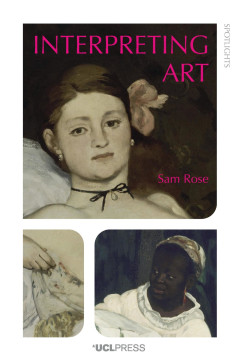
Interpreting art
How do people make sense of works of art? And how do they write to make others see the same way? There are many guides to looking at art, histories of art history and art criticism, and accounts of various ‘theories’ and ‘methods’, but this book offers something very unlike the normal search for difference and division: it examines the general and largely unspoken norms shared by interp…
- Edition
- -
- ISBN/ISSN
- 9781800081772
- Collation
- xi, 136 p. ill;
- Series Title
- -
- Call Number
- 701.18 INT E
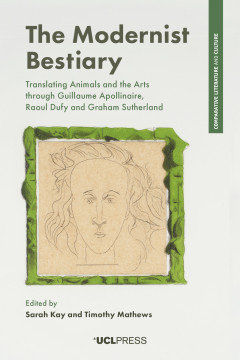
The modernist bestiary :translating animals and the arts through Guillaume Ap…
The Modernist Bestiary centres on Le Bestiaire ou Cortège d’Orphée (1911), a multimedia collaborative work by French-Polish poet Guillaume Apollinaire and French artist Raoul Dufy, and its homonym, The Bestiary or Procession of Orpheus (1979), by British artist Graham Sutherland. Rather than reconstructing the lineage of these two compositions, the book uncovers the aesthetic and intellectu…
- Edition
- -
- ISBN/ISSN
- 9781787351516
- Collation
- xiii, 186p.; ill.
- Series Title
- -
- Call Number
- 704.9432 MOD d
 Computer Science, Information & General Works
Computer Science, Information & General Works  Philosophy & Psychology
Philosophy & Psychology  Religion
Religion  Social Sciences
Social Sciences  Language
Language  Pure Science
Pure Science  Applied Sciences
Applied Sciences  Art & Recreation
Art & Recreation  Literature
Literature  History & Geography
History & Geography